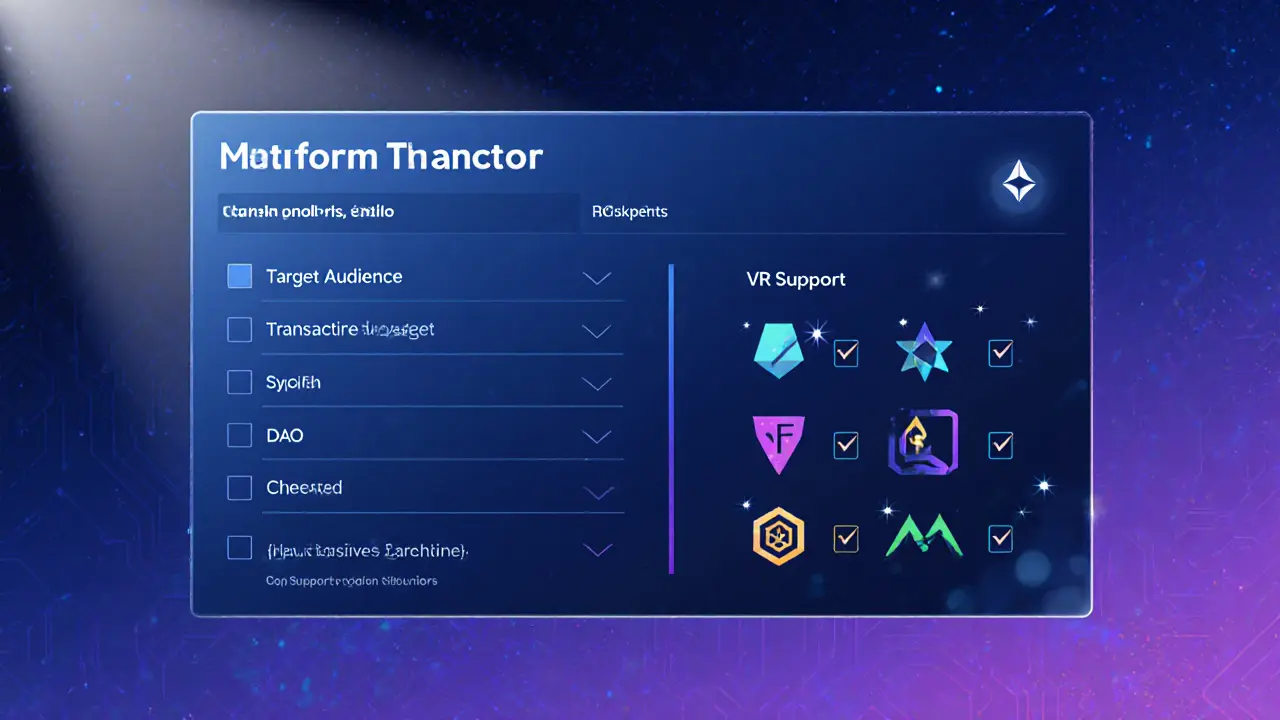The Sandbox: Unlocking Crypto Regulatory Sandboxes
When working with The Sandbox, a framework that lets blockchain projects test ideas under relaxed rules before full regulation. Also known as a regulatory sandbox, it gives innovators a safe space to experiment while regulators keep an eye on risks.
First up, the crypto regulatory sandbox, a program run by financial authorities that grants temporary exemptions for fintech experiments is the engine behind most sandbox activity. It requires a clear business plan, a risk‑mitigation strategy, and a defined test period. In return, participants get faster approvals, limited supervisory burdens, and direct feedback from regulators.
Why does MiCA matter here? The EU’s Markets in Crypto‑Assets regulation MiCA, a comprehensive legal framework for crypto assets across Europe sets the baseline rules that sandbox programs must respect. MiCA influences sandbox design by defining which token types can be tested and what consumer protections are mandatory.
Beyond Europe, many countries run their own blockchain sandbox, a localized version of the regulatory sandbox focused on distributed‑ledger technology. The United States, Singapore, and the UAE each tailor their criteria to local market needs, but the core idea stays the same: let innovators move fast without breaking the law.
How a sandbox program fits into a crypto project’s roadmap
Think of a sandbox as the “beta” stage of a product. You build a prototype, run it inside the sandbox, gather data, and then decide whether to go live. This step‑by‑step approach lowers capital outlay and reduces the chance of costly compliance fines later on. Projects that graduate from a sandbox often attract investors because they’ve already cleared an early regulatory hurdle.
One practical tip: keep your risk assessment simple but thorough. List the specific regulatory sections you’ll be exempt from, outline how you’ll monitor user activity, and set clear exit criteria. Regulators love transparency, and a well‑written assessment can shave weeks off the approval timeline.
Another common misconception is that sandbox participation guarantees a permanent license. It doesn’t. Instead, it provides a sandbox‑specific license that expires once testing ends. After graduation, you’ll need to apply for a full‑scale crypto license, following the rules you just proved you can meet.
When choosing a sandbox, compare the eligibility criteria, the duration of the test phase, and the support services offered. For example, some programs pair you with a mentor from the regulator’s team, while others only give you a checklist. Those extra resources can be the difference between a smooth run and a stalled trial.
Remember that sandbox rules differ by asset class. If you’re dealing with a security‑like token, you’ll face stricter disclosure requirements than a utility token. Likewise, stablecoins often need additional capital reserves. Knowing the asset classification early helps you pick the right sandbox.
Many projects combine sandbox work with crypto licensing, the formal process of registering as a money‑transmitter or MSB in a jurisdiction. By running a sandbox test first, you can gather real‑world data to strengthen your licensing application, making the regulator’s job easier and your approval odds higher.
If you’re a developer, treat the sandbox as a live testnet with real users. Capture metrics like transaction volume, error rates, and user onboarding time. Those numbers become powerful evidence when you pitch to investors or apply for a full license later.
Finally, keep an eye on the evolving regulatory landscape. New sandbox programs pop up as governments experiment with fintech, and existing ones often update their rules to reflect lessons learned. Subscribing to a newsletter or joining a crypto‑law community helps you stay ahead of changes that could impact your next sandbox application.
Now that you understand what The Sandbox means, how it connects to crypto regulatory sandboxes, MiCA, and blockchain sandbox programs worldwide, you’re ready to explore the detailed guides below. From licensing checklists to sandbox application step‑by‑step tutorials, the articles that follow will give you the hands‑on knowledge you need to move your project forward.

Top Blockchain Metaverse Platforms: Decentraland, The Sandbox & More
Jan 1, 2025, Posted by Ronan Caverly
Explore the top blockchain metaverse platforms, their underlying chains, key features, and how to pick the right virtual world for creators, brands, and investors.
MORESEARCH HERE
Categories
TAGS
- decentralized exchange
- crypto exchange review
- cryptocurrency
- crypto coin
- CoinMarketCap airdrop
- smart contracts
- tokenomics
- cryptocurrency exchange safety
- crypto exchange
- cryptocurrency airdrop
- crypto airdrop
- cryptocurrency exchange
- crypto airdrop guide
- blockchain token distribution
- DeFi
- crypto exchange scam
- crypto airdrop 2025
- Ethereum
- cross-chain interoperability
- ERC-20
